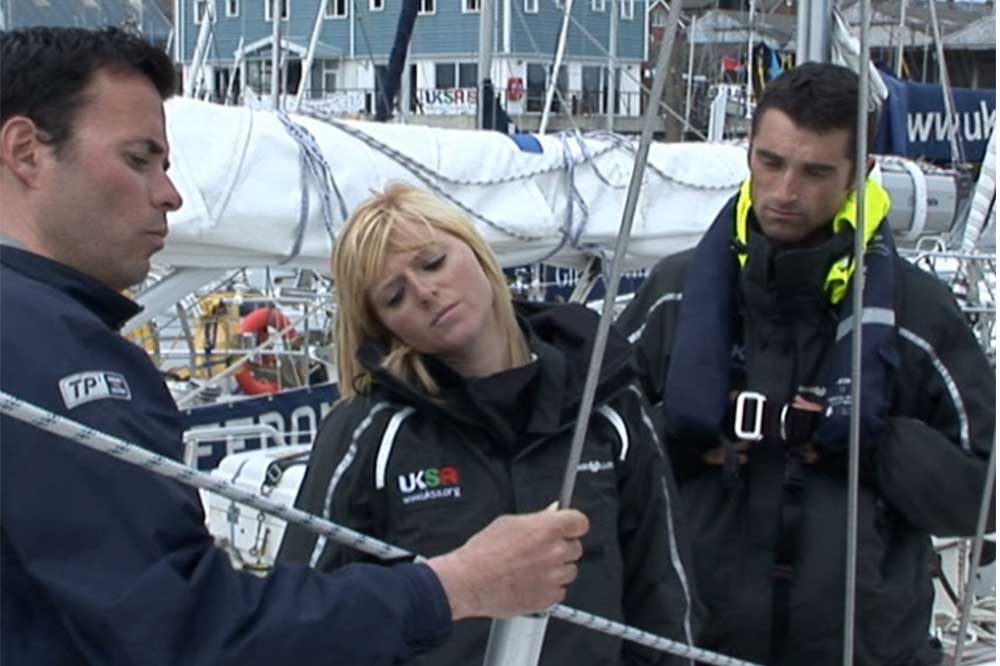Regular rig checks prevent the risk of mast and rigging failure at sea. This includes regular rig inspections of the spars, rigging and fittings, especially before a major passage at sea.
Most rig failures are caused by poor maintenance and breakage of the fittings and connectors, especially those that attach the shrouds to the mast, rather than the actual spars or rigging themselves failing. A quick visual rig check is sometimes all that it takes to deal with a potential problem. However, attention must also be given to reducing metal fatigue through correctly adjusting and tuning the rigging.
Rig inspections
A more thorough inspection of a yacht’s spars and rigging should be carried out at regular intervals by a trained rigger, ideally on an annual basis, or as recommended by the manufacturer. It is also advisable to do an inspection before a major sea passage. The inspection will comprise a visual inspection, sometimes aided by ultrasound tools, where wear is recorded and monitored for future inspections. The inspection will look for items such as cracks in rigging components, misalignment of stays and corrosion. Rig tensions should be checked and adjusted as necessary. A written record should be completed listing existing or potential concerns.
Every 5 years or so, more thorough rig checks should be carried out, which involve disassembly of the rig. This may include Dye Testing or Liquid Penetration Inspections which reveal surface flaws not visible to the naked eye.
Here’s a useful checklist of things to look out for that we’ve put together with the help of the KZ Marine Group in Auckland, New Zealand:
Checklist
- Deck check – split pins, adequacy of threaded fittings, chafe or breakage of stranded wires, rig cracking, rust streaking, condition of mast collar sheaves, halyard alignment, halyard chafe guards, forestay condition.
- Masthead – halyard sheaves rotate freely and are sound, bushes, split pins intact, electrical wires are clamped correctly and are chafe free, lights are operating, halyard shackles in good condition, Windex and wind gear operating correctly.
- Forestay – roller furling headstay, halyard leads at correct angle to swivel car, inspect halyards for wear on sheaves, fairleads and check swivel cars, mast tang pin hole, corrosion around mast tangs, threaded fittings, no broken strands of wire, signs of cracking or rust.
- Mast stay wires and mast fittings – no broken strands of wire, no visible signs of cracking along swage section, no signs of rust streaking, Tbar plates have retaining plugs or locking tabs, corrosion around mast tangs, fastenings secure, threaded fittings are sound, rigging screws locked.
- Spreaders – no visible signs of cracking , fastenings secure, no signs of rust streaking, broken wire strands, lights are working, wires clamped correctly, no chafe, no corrosion,
- Gooseneck, Vang and Knuckles – check for signs of corrosion, split pins are protected to safeguard sails, fastenings secure, excessive wear or elongation of fittings.
- Chainplates – check for excessive wear on spacers or bushes, signs of elongation in pin holes, alignment with stay angles, evidence of fracture at deck level, are fastened securely below deck to the hull.
- Spinnaker pole ring – attachment points secure, signs of corrosion around mast tangs.
- Insulators – check for sunlight degradation of plastic insulators, aerial wire securely fastened and in good condition.










